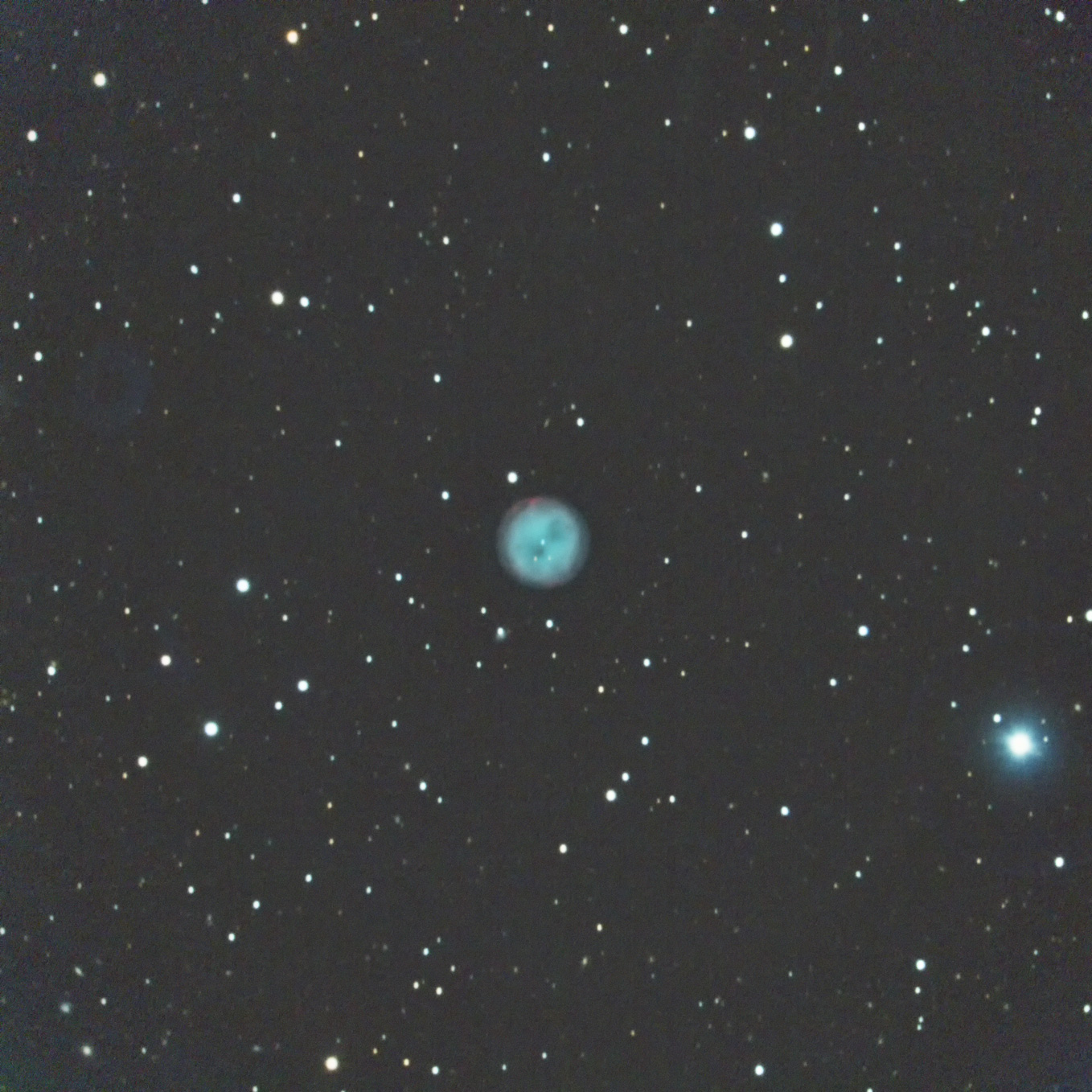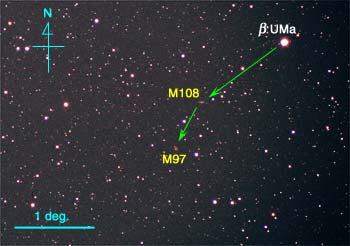
 |
| Date & Time: | Dec 27 2019, from 24:26 to 25:21 JST(+0900) |
| Composed 10 shots with 6 minutes exposed | |
| Optical: | Meade 25cm(10") Schmidt-Cassegrain with conversion lens (f=1600mm, F6.3) |
| with BaaderPlanetarium Moon&Skyglow filter | |
| Auto-guided with Meade LX200 Equatorial & Lacerta M-GEN | |
| Digital Camera: | Nikon D810A |
| Location: | Ooizumi, Hokuto city, Yamanashi pref. |
| Camera Settings: | Recording Format...14bit CCD-RAW, converted to 16bit TIFF(4080×4080) |
| Device Size...20×20mm | |
| Sensitivity...ISO4000, White Balance...Daylight |
And you can see another noticeable celestial body of M108 only 50 arc minutes NW of M97. Jump to Wide field of M97 & M108 | |
 |
Finding chart of M97 & M108 You can find this pair easily by tracing 2 deg. SE of beta UMa. And they can be caught in same field of portable binoculars. (Taken with f=200mm telephoto lens) |
Molecular cloud around ο UMa |
NGC2818 |
| Copyright(c) 2020 by Naoyuki Kurita, All rights reserved. | |||
| To top page | To Deepsky in Spring index | Ursa Major |